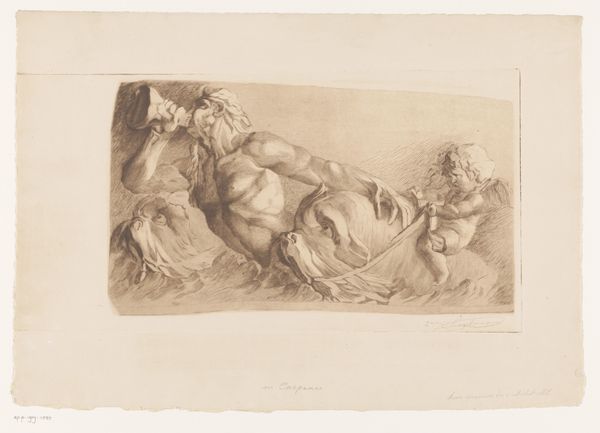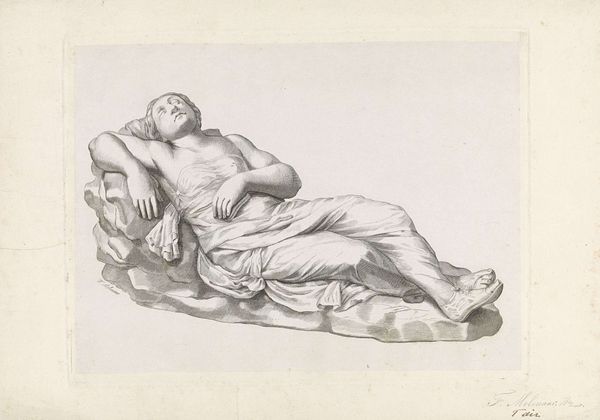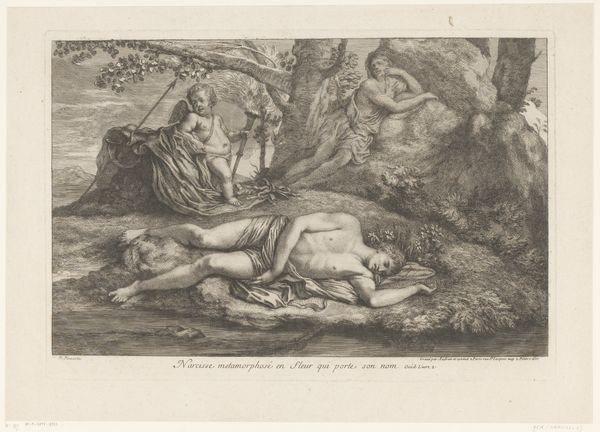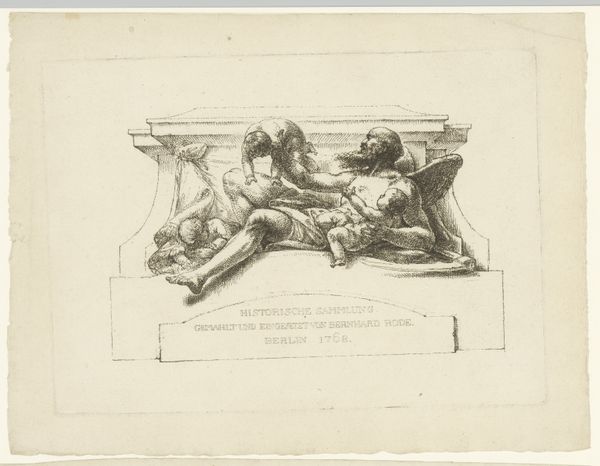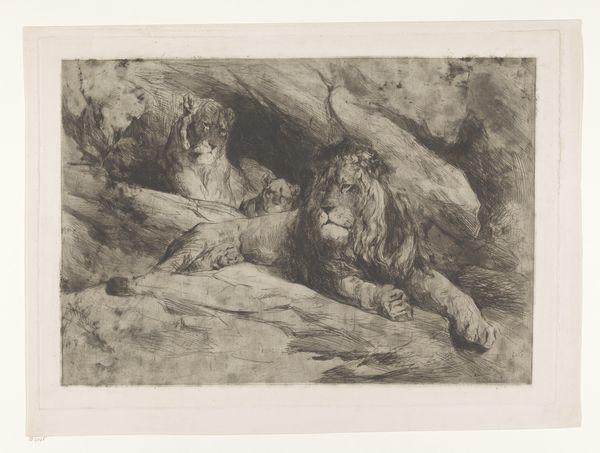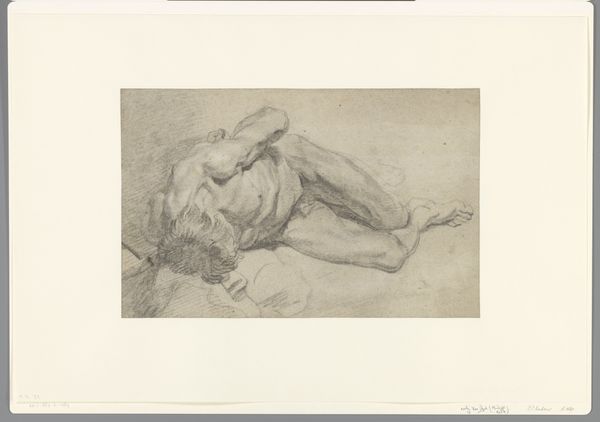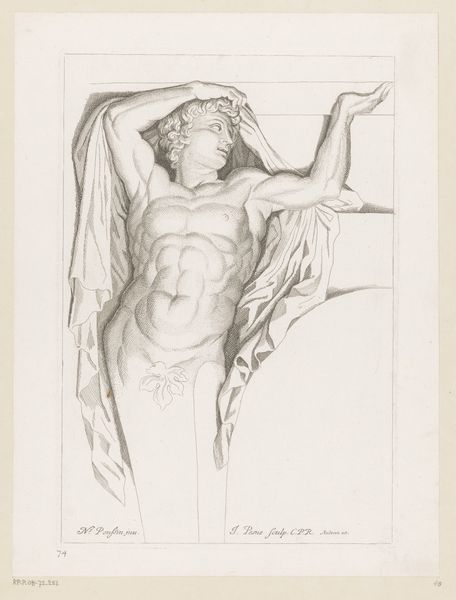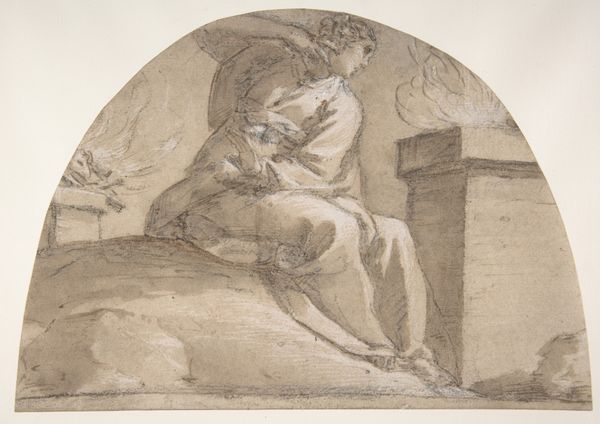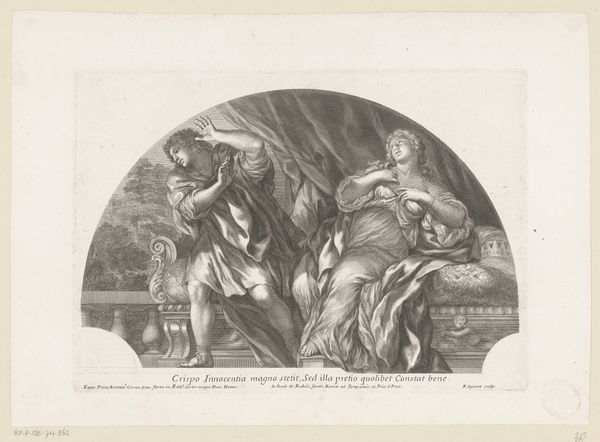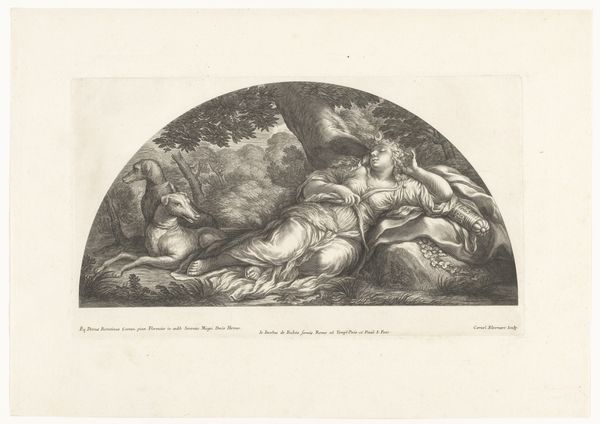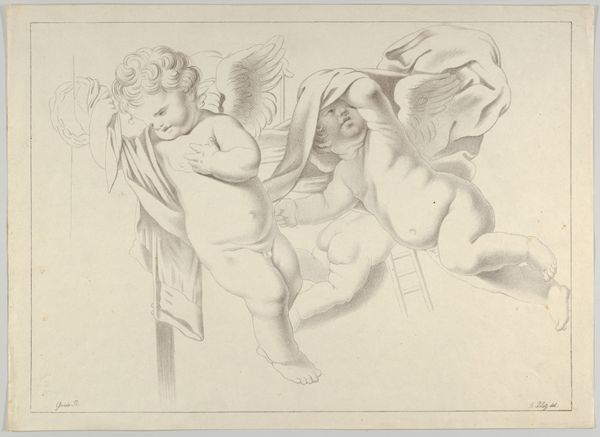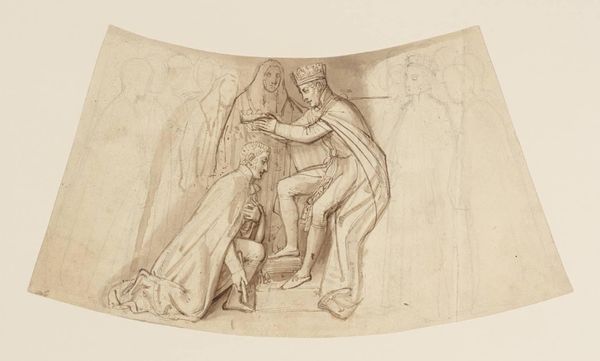
Dimensions: height 108 mm, width 160 mm
Copyright: Rijks Museum: Open Domain
Editor: This is a photograph of the Löwendenkmal in Luzern, taken before 1880 by Auguste Garcin. The sculpture itself depicts a dying lion carved into a rock face. There's such a sense of quiet grief radiating from the image. What symbols stand out to you in this piece? Curator: The lion, mortally wounded, rests upon a shield bearing the fleur-de-lis, symbol of the French monarchy. It’s an emotionally charged representation, isn’t it? Note the broken spear; it signifies not defeat in the martial sense, but rather sacrifice and loyalty unto death. Editor: I see, so it’s less about a military loss and more about…ideals? The lion embodies these Swiss Guards who died defending Louis XVI during the French Revolution? Curator: Precisely. Consider the cultural memory embedded here. The image taps into archetypal symbols: the lion as courage, the shield as defense, and the spear as action. The weight of history rests upon these figures. Even today, the Lion Monument triggers deeply-felt emotions related to honor and remembrance. Does it conjure up any particular associations for you? Editor: I guess I had always seen it as a symbol of tragic defeat, but understanding the depth of symbolism makes me appreciate how it memorializes sacrifice, almost transcending loss. Curator: And this is where images exert their power: cultural memory crystallized in form, continuing to resonate across centuries. Symbols and imagery do carry a heavy cultural load through time. Editor: Definitely given me a lot to reflect on. Thanks!
Comments
No comments
Be the first to comment and join the conversation on the ultimate creative platform.
